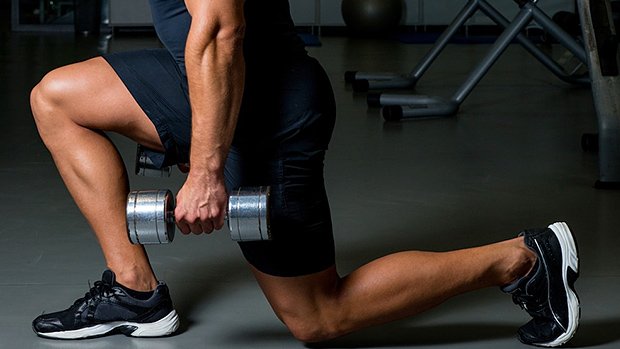It is like doing the lower limbs a disservice if one does not incorporate lateral lunges on leg day. According to Erica Ziel, personal trainer and presenter of The Core Connections Podcast, this unilateral action develops the glutes, quadriceps, and hamstrings while increasing balance, stability, and coordination.
Contents
- 1 8 Lateral Lunge Mistakes That Should Be Avoided!
- 2 Avoid Making These 8 Lateral Lunge Errors
- 3 The Knee Is Caved In
- 4 Having a hunched back
- 5 Extending the neck
- 6 Excessive Trunk Rotation
- 7 Posture is too narrow
- 8 Tuck Those Buttocks
- 9 Extend the toes outward
- 10 Putting all of the weight on the heels or the soles of the feet
8 Lateral Lunge Mistakes That Should Be Avoided!
While side lunges appear to be simple (step to the side and drop the buttocks), they are frequently executed improperly. When the form is wrong, lateral lunges become less effective as well as possibly unpleasant. Ziel addresses the most prevalent faults and advises on how to improve the technique.

- Place both feet together and the hands at the sides.
- Take a big stride to the right, sinking the hips and bending the right knee (it should align directly with the right ankle).
- Maintain a straight left leg (but don’t lock the knee), with both feet parallel to each other and facing forward. Maintain a neutral spine and raise the chest.
- When returned to standing, push off the right foot and straighten the right leg.
- Repeat on the left side for the appropriate amount of repetitions.
Avoid Making These 8 Lateral Lunge Errors
The Knee Is Caved In
When the knee of the moving leg bends inward during side lunges, it puts undue strain on the joints and can cause pain, according to Ziel. And, over time, this incorrect form might potentially result in damage.
It must be rectified by making sure the moving leg’s foot, knee, and hip bone are all aligned, according to Ziel. To activate the glutes, one should shift the weight back (bend at the hip rather than the knee).
Having a hunched back
According to Ziel, rounding the back might create pain in the lumbar area and possibly the knees. A slouched back may also indicate that one is tucking the pelvis, which can lead to lower back pain and pelvic floor dysfunction, according to her.
It must be corrected by maintaining a straight spine. She recommends extending from the tailbone to the top of the head and activating the core muscles to avoid sagging or overhanging the lower back.
Extending the neck
Many people do lateral lunges in front of a mirror. While they may believe it is assisting them in perfecting their technique, it is most likely hyperextending your neck muscles. According to Ziel, this puts a lot of strain on the neck and lower back and inhibits one from having optimal core activation.
It must be addressed by maintaining a neutral neck position. The neck should only have a little bend, so one should avoid looking up when doing side lunges, as she advises. It is also important to consider lengthening from the tailbone or pelvic floor to the top of the head.
Excessive Trunk Rotation
It’s simple to over-rotate the body as one leans to one side in a lateral lunge. But, according to Ziel, this puts too much tension on the knees, lower back, and hip flexors while stressing the wrong muscles (i.e., not the glutes and hips).
It must be corrected by maintaining a square trunk to the front. It should be considered becoming tall via the top of the head even when lowering the head, she advises. In addition, she recommends keeping space above your hip joint, as this can assist to remain out of the hip flexors and feel the connection coming from beneath the glutes and outer hips.
Posture is too narrow
If the feet are too close together after taking a stride to the side, the knee may move laterally past the ankle, potentially causing knee discomfort, according to Ziel.
It must be corrected by taking a broad stance with both feet parallel to one another. One should be able to move laterally back and forth with the legs maintaining alignment from the feet, knees, and sits-bones, as she explains.
Tuck Those Buttocks
While lateral lunges work the buttocks, hamstrings, and hips, never try to stimulate the muscles by tucking the tailbone. According to Ziel, it can cause people to grip the glutes, which can contribute to knee soreness, lower back pain, and pelvic floor dysfunction.
It must be fixed by considering long, slender muscles once more. She recommends standing tall from the tailbone and pelvic floor to the top of the head.
Extend the toes outward
This can put a lot of strain on the knees and hinders people from obtaining the optimal glute activation, as said by Ziel. People may also sense the hip flexors straining to perform the job when the feet are turned outward [even just a little past parallel, she adds. Checking the foot posture and making sure they’re parallel to each other will correct it, as advised by Ziel. Even a slight inward tilt of the toes is acceptable.
Putting all of the weight on the heels or the soles of the feet
When the weight is evenly distributed across the foot, lateral lunges will increase the activation of the hamstrings and the underside of the glutes, according to Ziel.
One can make it right by concentrating on maintaining the weight as evenly distributed as possible. This implies that one should feel some weight under the balls of the feet as well as the toes (particularly the big toe), she explains.
Avoiding the above-mentioned mistakes while side lunging will help in keeping one fit and to have the right body posture.